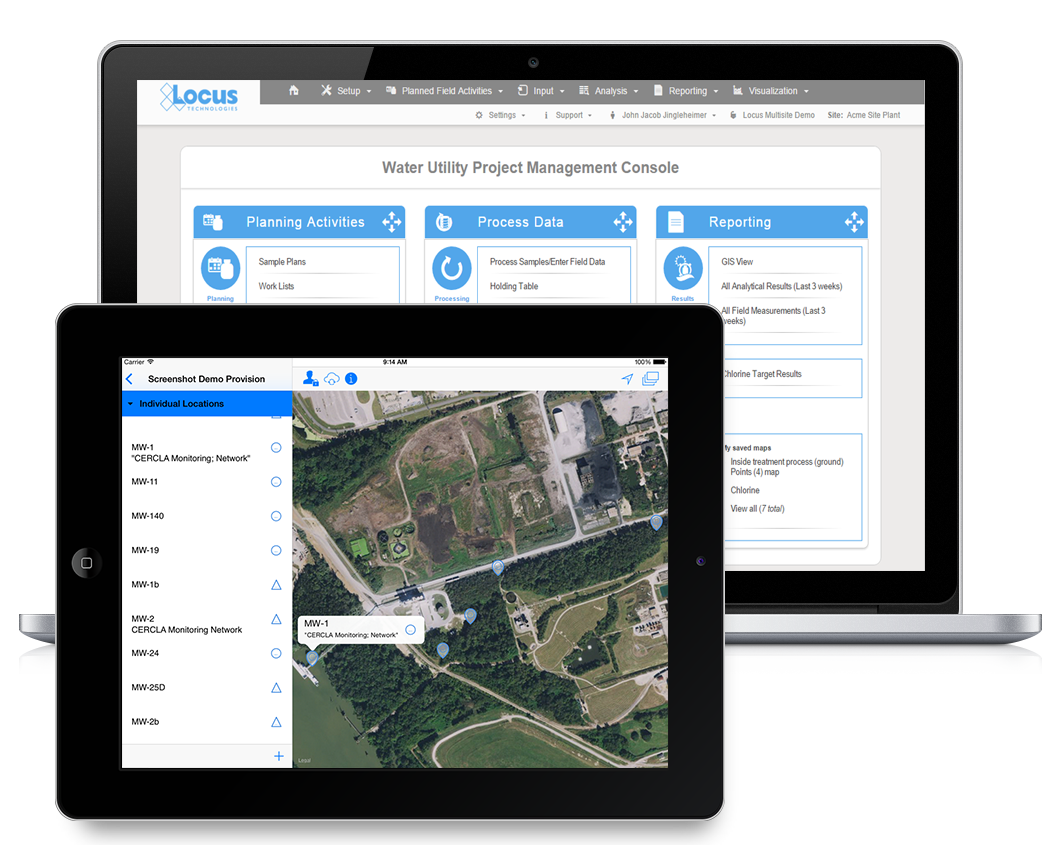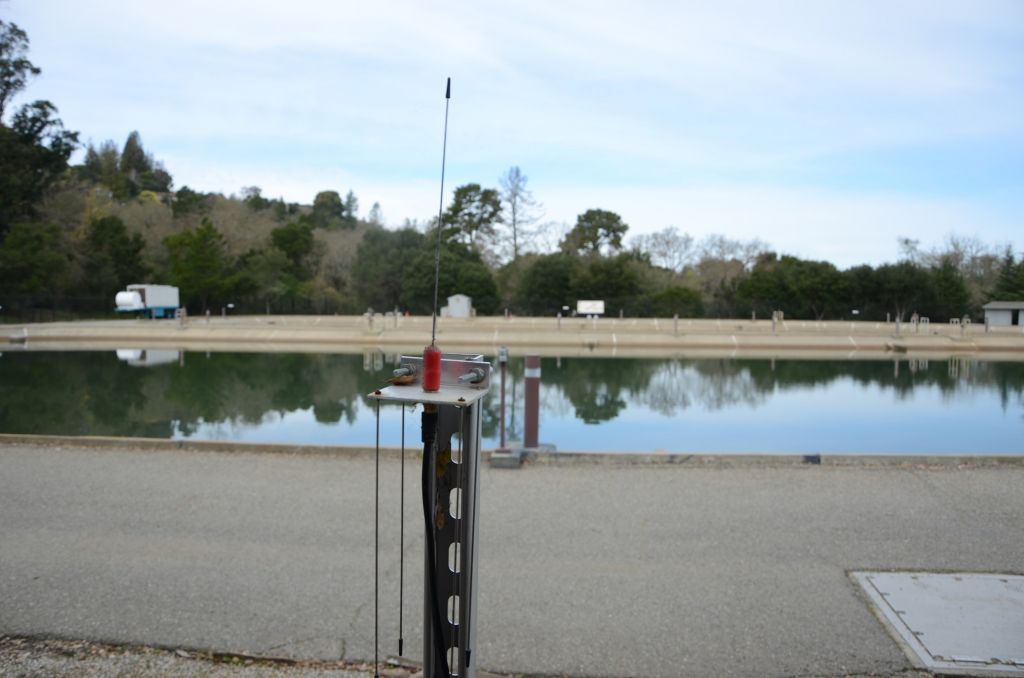Tackling the Water Crisis: Locus Software for Water Sustainability
Explore how innovative technologies like Locus Water software-as-a-service (SaaS) can play a pivotal role in addressing the water crisis and promoting water sustainability.
Explore how innovative technologies like Locus Water software-as-a-service (SaaS) can play a pivotal role in addressing the water crisis and promoting water sustainability.
Becoming water positive is a more difficult task than becoming carbon positive. Both in practice and in tracking complex water data. Less than a decade ago, experts questioned if it was even feasible to have a net-positive impact when it comes to water. Perhaps the biggest reason for the difficulty with water is a relative volatility when compared with carbon. Seasonal environmental changes in rainfall, as well as droughts and floods, effectively make water consumption a non-zero-sum game. And with water, quality is more important than volume. Today, companies and organizations are believing that goal a more attainable one.

Organizations are now shooting for a goal that will create a net-positive impact on volume and quality. Recently, Microsoft announced their goal of becoming water positive by 2030. Their goal is not only impressive, but it is complex and multi-faceted. They plan to achieve more freshwater collection, lower consumption, working with various agencies and NGOs on regulatory changes, and perhaps most importantly digitizing their water data.
Why is this goal so important? Almost a third of the world’s population, over 2.2 billion individuals, lack access to safe and clean water. With potential chronic shortages becoming more common and increased demand being more likely, the need for fresh water will be more drastic as time goes on. Organizations aiming for water positivity will lessen the momentum of water becoming less available.

Where does Locus come in? We can’t solve a problem that we can’t understand. With Locus software, companies and organizations can accurately track and report complex ground and surface water data. Our calculation engine can deliver real-time estimates of supply and demand and our water quality software can manage sample planning and configure notifications for late or missing samples or exceedances in pre-defined limits. Our water quality solutions, long used by utilities like San Jose Water Company and Santa Clara Valley Water, can also help businesses achieve a greater perspective on their water consumption, providing the tools to allow them to become water positive.
In most cities in the US, drinking water quality conforms with the norms of the Safe Drinking Water Act, which requires EPA to set Maximum Contaminant Levels (MCL) for potential pollutants. Besides, the EPA’s Consumer Confidence Rule (CCR) of 1998 requires most public water suppliers to provide consumer confidence reports, also known as annual water quality reports, to their customers.
PFAS stands for “perfluoroalkyl and polyfluoroalkyl substances,” with the most important thing to know that this large group of synthetic chemicals includes perfluorooctanoic acid (PFOA) and perfluorooctane sulfonate (PFOS).
Not Regulated by EPA
When it comes to drinking water from the tap in the US, the phrase that fits concerning PFOA and PFOS is “caveat emptor” (buyer beware). The EPA has not regulated these chemicals. There are no federal regulations for PFOA and PFOS in drinking water in the US.
In May 2016, the EPA established a drinking water “health advisory” of 70 parts per trillion (ppt) for the combined concentrations of PFOA and PFOS. While that was a start, there’s a big difference between a health advisory and a regulation that has teeth. Moreover, many scientists consider 70 ppt too high a limit. Reportedly, the EPA is considering turning its 70 ppt health advisory into regulation.
Meanwhile, some states have stepped up to the plate to protect their residents and visitors better. In April 2019, for instance, the New Jersey Department of Environmental Protection (DEP) proposed maximum contamination levels (MCLs) of 14 ppt for PFOA and 13 ppt for PFOS in the state’s drinking water.
As a water consumer, you should be aware of this crisis, as it has the potential to affect both your health and wealth.
What are PFOA and PFOS?
This toxic couple has contaminated the drinking water supply in areas surrounding some industrial sites and military bases. They’re the most studied of the PFAS group because they’re the ones that have been produced in the most significant quantities in the United States, according to the US Environmental Protection Agency (EPA).
PFOA and PFOS, which repel water and stains of various types, have been used as coatings on fabrics and leather and in the production of stain-repellent carpeting and are found in firefighting foams — which have been used extensively on US military bases for decades — among other products. Moreover, some related polyfluoroalkyl compounds can be transformed into these chemicals in the environment, per the National Institutes of Health (NIH), with the Environmental Working Group (EWG) stating that some perfluorinated chemicals not only break down into PFOA in the environment but also can do so in the human body.
While PFOA and PFOS are no longer made in the US, that hardly matters in our global economy. Both are still produced internationally, which means they end up in our country via imports of consumer goods such as carpet, apparel, textiles, and paper and packaging.
Why all the concern about PFOA and PFOS?
These chemicals — dubbed “forever chemicals” because they’re persistent in the environment and the human body — have been linked to cancer, thyroid disease, weakened the immune system and liver function, low infant birth weight, and other health problems, according to many sources.
And this is what the EPA says: “There is evidence that exposure to PFAS can lead to adverse health outcomes in humans. If humans, or animals, ingest PFAS…the PFAS are absorbed and can accumulate in the body. PFAS stay in the human body for long periods. As a result, as people get exposed to PFAS from different sources over time, the level of PFAS in their bodies may increase to the point where they suffer from adverse health effects.”
In most industrialized cities around the world, drinking water is readily available and safe. Safeguarding groundwater (aquifers), streams, rivers, reservoirs, and lakes is crucial to continue delivering clean water on the tap. So is testing and validated water quality data. There are several aspects of drinking water quality that is of concern in the United States, including Cryptosporidium, disinfection by-products, lead, perchlorates, and pharmaceutical substances.

Recent headlines about water quality issues in cities like Flint, Pittsburgh, Asheville, or Rome and Cape Town are motivating consumers to ask more questions about their water quality. Albuquerque’s groundwater is becoming seriously depleted; Fresno’s groundwater is highly susceptible to contamination; In Atlanta, Chicago, Detroit, Houston, Los Angeles, New Orleans, Newark, Philadelphia, Phoenix, San Diego and Washington, D.C., source water is threatened by runoff and industrial or sewage contamination; Water supplies in Baltimore, Fresno, Los Angeles, New Orleans, San Diego, and several other cities are vulnerable to agricultural pollution containing nitrogen, pesticides or sediment.

Locus Technologies IoT Monitoring. Connected at all times.
In most cities in the US, drinking water quality is in conformity with the norms of the Safe Drinking Water Act, which requires EPA to set Maximum Contaminant Levels (MCL) for potential pollutants. In addition, the EPA’s Consumer Confidence Report (CCR) Rule of 1998 requires most public water suppliers to provide consumer confidence reports, also known as annual water quality reports, to their customers. Each year by July 1 anyone connected to a public water system should receive in the mail an annual water quality report that tells where water in a specific locality comes from and what’s in it. Locus EIM automates this reporting and allows utilities to be transparent by publishing CCR online in real time so that consumers have access to their CCR at all times. Consumers can also find out about these local reports on a map provided by EPA.
Utilities must maintain good water quality records and manage them in a secure database with built-in alerts for any outliers so that responsible water quality managers can react quickly when there is exceedance of MCL or another regulatory limit.
Learn more about our water solutions.
The city cut daily water use limits first to 87 liters and then 50 in a bid to avert shutting off supplies.
The city had set a 50-liter daily limit and had told citizens “Day Zero” was approaching when people would have to queue at standpipes.
But water-saving efforts in the South African city have seen the day pushed back from April to 27 August. Seasonal rains should mean that date is now averted, the city said. The shortages follow three years of low rainfall. The city had resorted to increasingly drastic measures to clamp down on water usage, including “naming and shaming” the 100 addresses using the most water and fining residents who failed to comply with the 50 liters (13 gallons) limit per person.
By comparison, the average California consumer uses some 322 liters (85 gallons) of water per day. Water use in California was highest in the summer months of June through September, where it averaged 412 liters per person per day. By comparison, during the cooler and wetter months of January through March of 2016, average per capita water use was only 242 liters per person per day.
Although the risk that piped water supplies will be shut off this year has receded, politicians and environmentalists warn that the water crisis is there to stay in Cape Town, as year-on-year rainfall levels dwindle.
According to the Potsdam Institute for Climate Impact Research (PIK) in Germany, climate change is threatening the world’s water supply, increasing the number of people at risk of absolute water scarcity by 40 percent in this century alone.
PIK heeds the warning that if the Earth should warm by 5.4 degrees Fahrenheit above pre-industrial levels and if populations grow, ten in 100 people would have access to less than 132,000 gallons of water in a year- which is up from one to two in 100 today. This prediction is particularly alarming considering PIK’s announcement in October that 1.3 billion of Earth’s 7 billion people already live in water-scarce regions.
The UN gives a similar forecast that the world is on track to experience a temperature increase within the next century, which at the very least would be the catalyst for higher sea levels and more intense storms.
The study that PIK references was based on an analysis of 11 global hydrological models, and conducted by research institutes from around the world. PIK also states that different regions of the world would have varying experiences as the world’s temperature increases: the southern U.S., Mediterranean, Middle East and southern China most likely seeing lower water availability, while southern India, western China and parts of East Africa possibly experiencing noticeable increases.
This research serves as yet another reminder that water scarcity is a real thing, and the loss of this precious resource is a world-wide concern.
How many times has water played a part in your routine activities today? Maybe you have taken a shower, made coffee, flushed a toilet, or washed your hands. Chances are you’ve already counted on water multiple times today, and probably didn’t think twice about it.
As we count down the last few days of National Water Quality Month, I would like to elaborate on the importance of this resource, and urgency of this subject. Water is obviously a crucial resource to sustain life. Not only used for daily consumption, but also for general hygiene, recreational purposes, and as the necessary fuel to propel everyday business operations. Most energy generation sources also heavily depend on high water availability. However, water is not a limitless resource. Yet, most of us continue to take it for granted while it grows in scarcity as the world’s population booms.
Only about three percent of the world’s water supply is drinking water, and more than half of this is unavailable, locked in ice at the North and South poles. The remaining supply is distributed in surface water bodies like lakes and rivers, and in underground repositories as groundwater. According to the United Nations, 783 million people do not have access to clean water. This number is likely to worsen in the future as the demand for clean water is expected to rise 40 percent by 2030.
With water being at such high demand, and such limited availability, it is essential that proper water quality be achieved. This is most important for safety reasons, but water quality issues also pose potential liabilities of billions of dollars to businesses worldwide.
Water is key to the operations and success of many businesses in various industries, such as agriculture, oil & gas, and nuclear. It is the responsibility of these businesses to properly manage this risk, and of all the types of water-related data that companies need, measurements pertaining to water quality stand out in terms of their sheer quantity and complexity.
Existing regulations are largely limited to requiring the monitoring and reporting of the contamination of surface water bodies and groundwater by various industrial processes, spills, and other releases. However, the focus has begun to shift from compliance-based monitoring and reporting, to the scarcity and quality of drinking water supplies, and the impact that energy consumption associated with water activities has on carbon emissions. As detection technology improves and human exposure to low-level contamination is linked to more diseases, more testing will be required for ever smaller and smaller concentration levels. All of this means only more and more information that needs to be captured, stored, managed, and reported.
In order to effectively manage all the data for this critical resource, it only makes sense to use the most up-to-date technology. In this case, it comes in the form of a robust, web-based information management system that allows businesses to manage, organize, and visualize their water quality data from a single access point in near real time.
At Locus, we recognize the importance of this resource and the challenges that accompany water quality management. This is why we continue to mold our software offerings to best help organizations responsibly handle this data, and ensure positive decision making. It’s the decisions we make today that will affect the state of this precious resource in the future.
299 Fairchild Drive
Mountain View, CA 94043
P: +1 (650) 960-1640
F: +1 (415) 360-5889
Locus Technologies provides cloud-based environmental software and mobile solutions for EHS, sustainability management, GHG reporting, water quality management, risk management, and analytical, geologic, and ecologic environmental data management.
